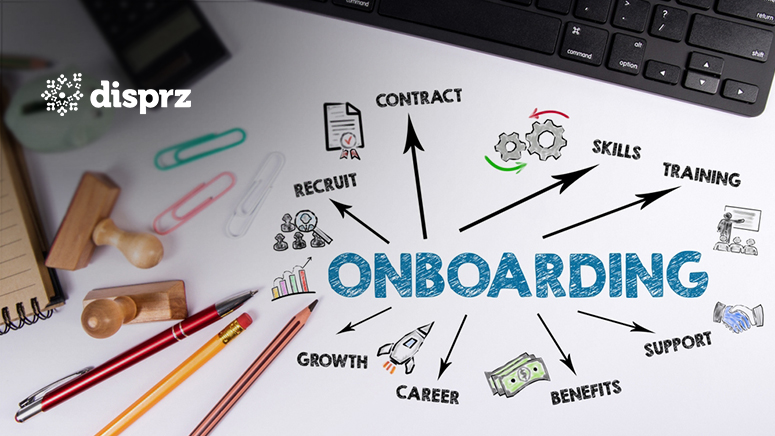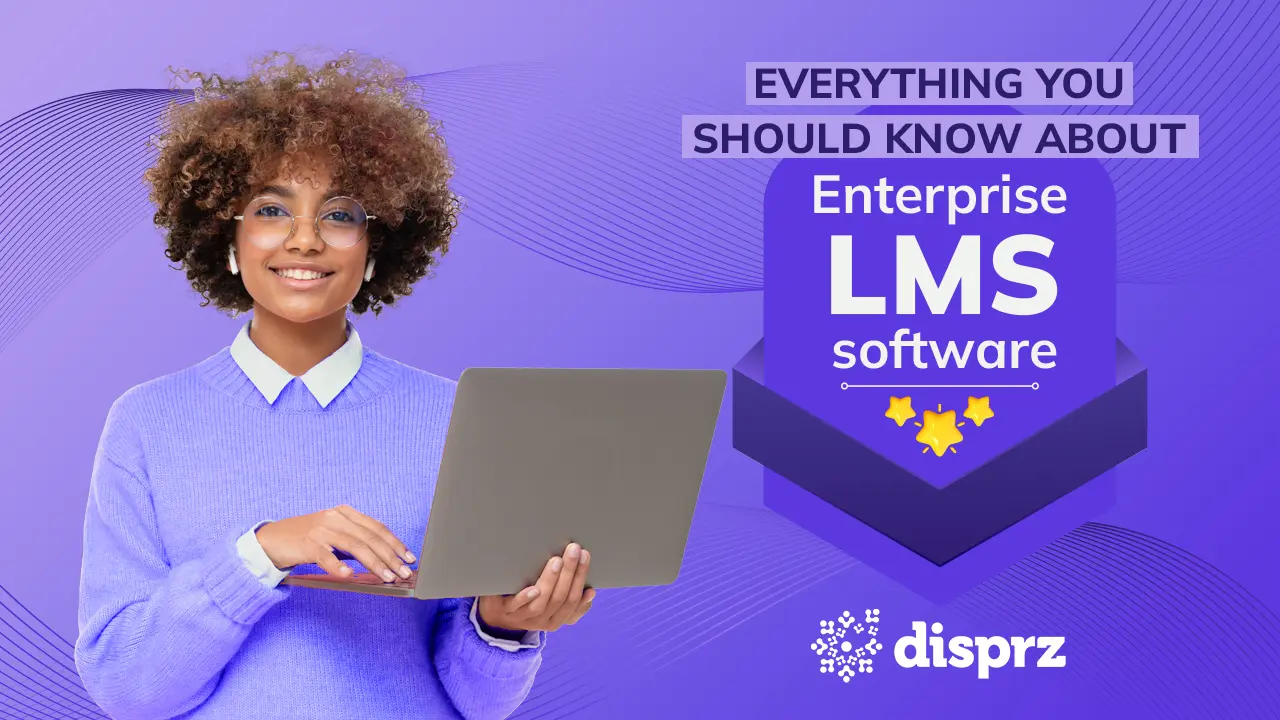
6 min read
• 31 Mar 2024
How to Simplify the Employee Onboarding Process
Do you want to make the employee onboarding process easier? Discover 4 best practices to simplify your process with an LMS.
-
eBookEmployee Upskilling - A Detailed Blueprint For Building A Skills-Driven Learning Culture
Imagine the initial experience of a new employee entering your organization. They eagerly open their email, only to find a long list of tasks waiting for them: acquiring software access, enrolling in benefits, completing your orientation program, and a multitude of other essential responsibilities.
However, they soon realize there's a critical missing piece in this puzzle - a well-defined process to reach out to your IT department for assistance.
On top of that, the HR specialist in charge of benefits is currently out of commission due to illness, the finance department is deeply engrossed in handling quarterly earnings reports, and to add another layer of complexity, this new employee has a virtual meeting with their manager scheduled in just 15 minutes, but they lack the necessary Zoom license.
This scenario underscores the critical importance of a structured onboarding process. Such an approach can significantly boost employee retention, with the potential to increase it by as much as 82%. Regrettably, research indicates that 9 out of 10 employees believe their organizations handle onboarding poorly.
Regardless of the size of the company, it's imperative that we establish a robust onboarding process. In fact, the onboarding journey should commence even before the employee officially joins the team.
By providing the new hires with the right guidance, information, and support from the very beginning through a well-structured and user-friendly onboarding process, organizations have the opportunity to enhance employee retention rates across all departments, expedite their ability to make a meaningful impact, ensure compliance from day one, and ultimately spare the organization from unnecessary challenges in the future.
Why Efficient Employee Onboarding Matters?
The significance of an efficient employee onboarding process cannot be overstated. It serves as the initial point of contact for new employees after an extensive interview process.
- First Impression: Employee onboarding is their initial interaction after the interview process; a poor experience may lead to job offer regrets.
- Negative Impact: A subpar onboarding can create negative perceptions, bias against the organization, and early turnover.
- Necessity: A well-structured onboarding is essential for helping new hires adapt, understand their roles, and build positive relationships.
- Integration: A great onboarding experience not only welcomes but also accelerates integration into the company culture.
- Relief for HR: Managing onboarding paperwork and documentation can be overwhelming for HR professionals.
Benefits of Efficient Onboarding:
- Enhanced Comprehension: Improves employees' understanding of product knowledge and company policies.
- Holistic Understanding: Equips employees with comprehensive knowledge of the brand, its processes, and systems.
- Brand Ambassadors: Empowers employees to represent the company effectively, aligned with its core values.
Streamlining the employee onboarding process not only leaves a positive impression on new employees but also lightens the workload of the HR team.
Best Practices to Simplify the Employee Onboarding Process
Structure Your Onboarding Process
Develop a well-organized onboarding plan that outlines the entire process from pre-hire to the end of the probationary period. Have an onboarding checklist where you clearly define the steps, responsibilities, and timelines.
Having a structured plan helps new employees understand what to expect and ensures that nothing is missed. Plan your first day of onboarding with welcome kits for employees, induction, roles and responsibilities walkthrough.
.png?width=181&height=360&name=1%20(5).png)
A Learning Management System (LMS) helps in creating impactful onboarding that will make the new knowledge and frontline employees more confident. With an LMS you can set the right tone from the beginning and offer a pleasant onboarding experience that the employees shall remember.
Leveraging an LMS allows you to easily create 30-60-90 workflows to simplify the onboarding process, enhance training and development, and engage new employees throughout the journey.
Check how the largest ecommerce company leveraged an effective onboarding platform that resulted in 85% platform adoption rate and enhanced productivity.
Digitize Onboarding Process
During the initial 45 days of employment, up to 20% of employee turnover occurs. However, a remarkable 69% of employees are inclined to remain with a company for three years or more when they undergo a positive onboarding experience.
Enhance your employee onboarding by digitizing the process. Move away from paper-based processes and use digital forms and documents. Online onboarding portals or software like a learning management system (LMS) can make it easier for employees to complete paperwork, such as tax forms, benefits enrollment, and policy acknowledgments.
This reduces administrative work and minimizes the chances of lost documents. Digital onboarding ensures consistent, up-to-date, and accurate information, regardless of whether you have a small team of 20 or a global workforce of 2000.
Centralize Information and Resources
Maintain a centralized location, such as an intranet or a shared drive, for all onboarding materials and resources. This can include company policies, training materials, and frequently asked questions (FAQs).
Providing easy access to information allows new hires to find answers independently, reducing the need for constant assistance.
Improve Training Efficacy by Making it Interactive
It's crucial to prioritize interactive training for new hires. They are eager to connect with their new colleagues, and isolating them in front of a computer until they finish training can be discouraging. Let's explore ways to enhance your training and development for employee to make it more engaging.
You can leverage your Learning Management System (LMS) to provide:
- Live video sessions with experienced team members or colleagues, even from different departments.
- Discussion forums that allow them to ask questions and connect with fellow new hires or existing employees.
- Virtual break rooms for casual chats with colleagues about non-work-related topics.
- Implement a buddy system for added support. This is a practice followed by many organizations where new employees are paired with experienced employees or mentors who guide and support them during the onboarding period.
- Organize virtual icebreaker events or social media gatherings to foster connections and boost employee engagement.
.png?width=624&height=410&name=2%20(4).png)
Take Feedback and Address Queries Instantly
A staggering 81% of new hires admit to feeling overwhelmed by the sheer volume of information during their onboarding process. However, it's not just about implementing the process; it's equally important to continuously assess its effectiveness.
When was the last time you checked your 30-60- 90 days onboarding process was effective? If you haven't done so recently, now is the perfect opportunity.
Gather feedback from the new hires who have completed the full onboarding journey to ensure it's not only comprehensive but also a positive experience.
The new hire can record audio or video and upload it in the LMS to share what they feel about the company. You can even share surveys after each session to gauge their interest level.
It helps you understand if the new hires are finding the onboarding process easy and engaging or if you need to implement some changes to make the onboarding sessions more interesting.
Track the Onboarding Process and Learning Behavior in Real-time
An LMS provides real-time visibility into the onboarding and learning analytics. Through detailed insights, it allows you to track employee performance, job readiness, and learning patterns. With real-time information, you can predict and identify employees which are not going to be making the cut of timely productivity.
With an LMS, you can deep dive into various metrics to find out how many new hires are completing the courses and which learning programs are effective. Accordingly, take actionable measures to accelerate time-to-productivity and build a winning workforce.
Keep these 5 LMS misconceptions in mind while opting for an LMS for your onboarding program.
Conclusion
In today's competitive job market, where talent is a precious commodity, investing in an effective and structured onboarding process is an investment in the future success of your company. We must acknowledge that
Onboarding is not just a matter of completing paperwork or ticking off tasks. It's about creating an experience that resonates with new hires, making them feel valued, supported, and eager to contribute.
Simplifying onboarding isn't just about making life easier for HR; it's about fostering a culture of inclusion, clear communication, and growth within the organization. The journey to simplifying the onboarding process is a journey toward creating a stronger, more engaged, and more productive workforce.
A Disprz’s LMS can simplify the entire onboarding process and help new employees start off strong. When everything is streamlined it becomes easier for the new hires to take up and excel in the job responsibilities given to them.
Disprz’s low touch high scale onboarding helps in making employees job-ready from the very first day. With this high-end learning solution, you can build effective onboarding pathways to make the new hires productive quickly.
Book a demo to experience disprz low touch high scale onboarding in action.
About the author

Debashree Patnaik
Debashree is a seasoned content strategist at Disprz.ai, specializing in enterprise learning and skilling. With diverse experience in B2B and B2C sectors, including ed tech, she leads the creation of our Purple papers, driving thought leadership. Her focus on generative AI, skilling, and learning reflects her commitment to innovation. With over 6 years of content management expertise, Debashree holds a degree in Aeronautical Engineering and seamlessly combines technical knowledge with compelling storytelling to inspire change and drive engagement.
More Resources
4 min read
• 15 Apr 2024
Unlocking the Power of Managerial Engagement in Talent Development
4 min read
• 09 Apr 2024
Nurturing Excellence in Building Leadership Pipelines
Sign up to get free resources and stay up to date with Disprz!
Discover how Disprz can align learning and upskilling with your desired business outcomes.





